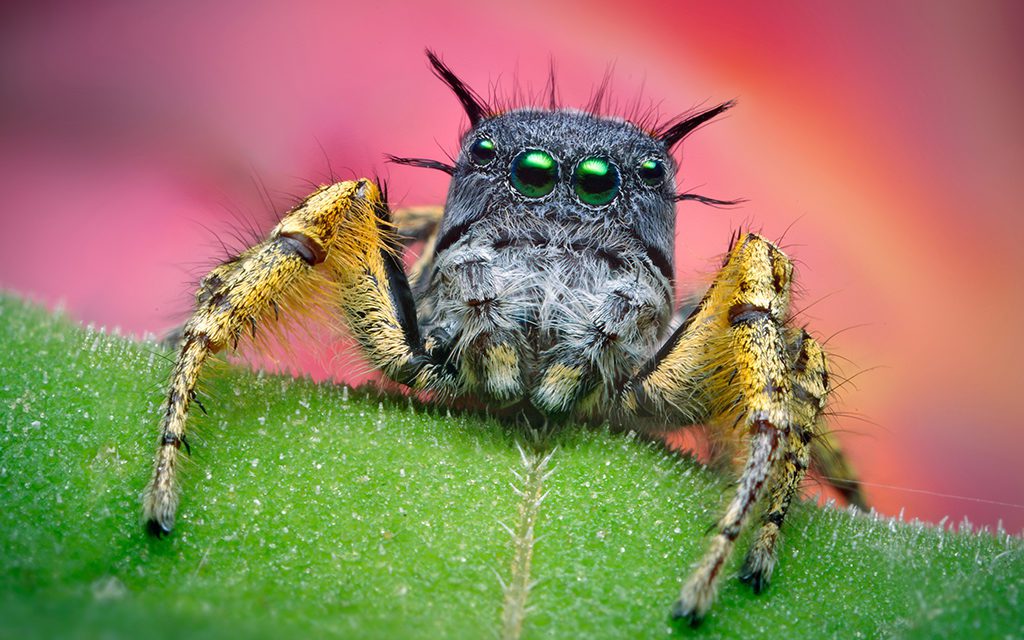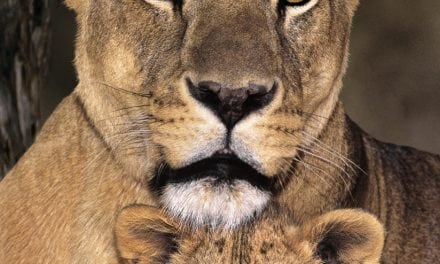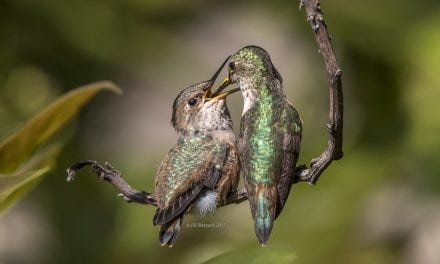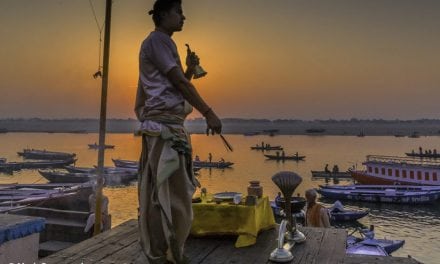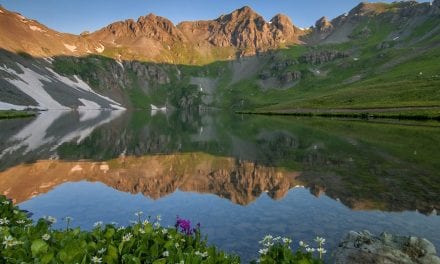Macro lenses give you the power to magnify and observe the world around you with much greater detail than possible with just your unaided eyes. This is an incredible, singular power, capable of completely changing your perspective on life and the natural world around you. To be able to see clearly into lives smaller than your own through macro insect photography is an extremely enlightening and humbling experience.
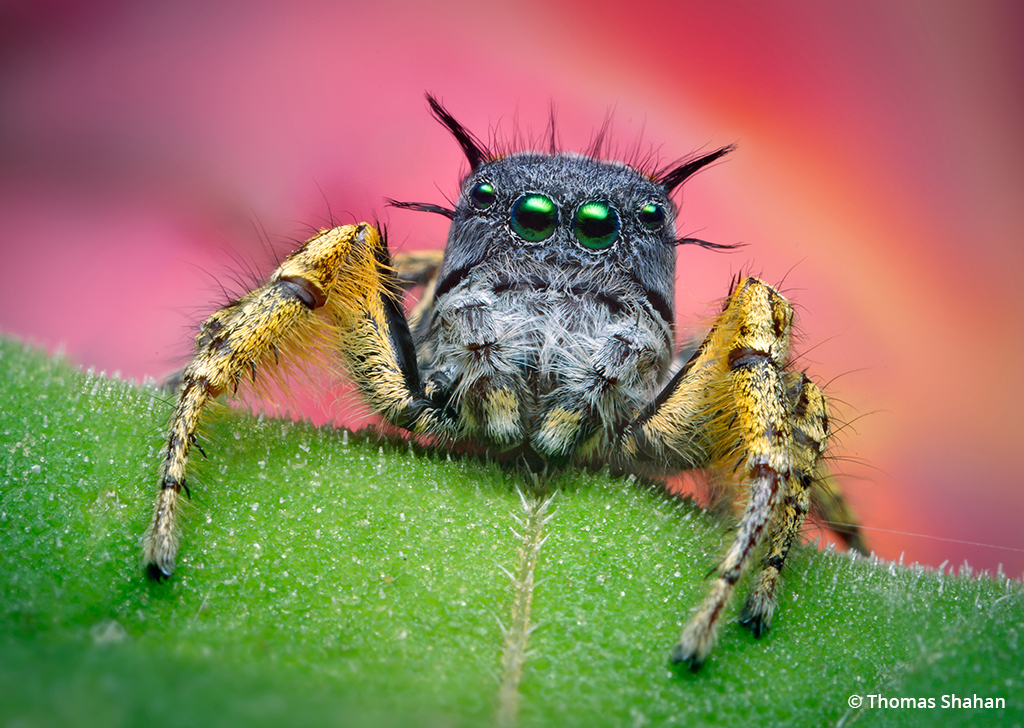
Phidippus mystaceus jumping spider. Focus stack of three shots. Pentax K-x, reversed SMC Pentax-M 50mm F1.7 on extension tubes, off-camera diffused flash. Exposure: 1/100 sec., ƒ/11. ISO 200.
I’ve always loved arthropods. The phylum Arthropoda includes insects, arachnids and other related invertebrates with an exoskeleton. Once you can see the beauty and incredible behavior of these tiny animals, it’s difficult to fear or loathe them. To meet them on such an intimate level can change one’s view of these oft-misunderstood animals. There’s untold beauty all around us deserving of a closer look.
It wasn’t until I started turning lenses backward in high school that a deep interest in entomology and arachnology took root. Specifically, it was noticing local jumping spiders for the first time—probably Phidippus audax, the “bold jumper”— that got me hooked. After making eye contact with one of these amazing spiders, I was in love; the realization that such beauty, intelligence and diversity could exist in just one family of spiders was a revelation. With large inquisitive eyes, wild ornamentation and curious behavior, they stood out from other spiders I had seen. And better yet, they were everywhere. I’ve found nearly 60 species of jumping spider just here in Oklahoma, including five new (to me) species just this last year. It’s a never-ending quest, like an unquenchable thirst for more spiders, and I owe it largely to macro insect photography, which allowed me to see them more clearly, document species I saw and share this beauty with others.
Changing The Narrative Through Art
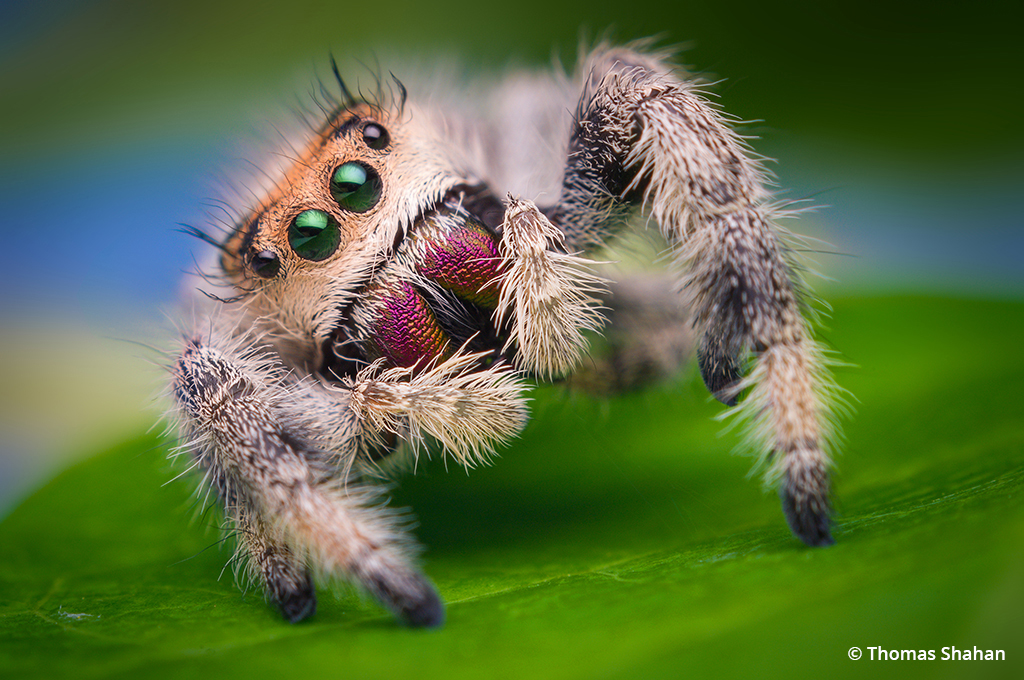
Phidippus regius female jumping spider grooming. Pentax K-x, reversed SMC Pentax-M 50mm F1.7 on extension tubes, off-camera diffused flash. Exposure: 1/100 sec., ƒ/11, ISO 200.
For me, photography was a great way to not only get closer to bugs but to explore creative interpretations of color and composition to make them more approachable. I could use what I knew about art and design to make impactful photos that could hopefully reach a larger audience and persuade more minds about the beauty of arthropods. There’s so much fright and misrepresentation of them that it felt necessary to illustrate them in an attractive, positive way. It’s easier to sell the idea that spiders are fascinating, beneficial animals if the message is wrapped up in a pretty package. I’m literally trying to cast spiders in a flattering light.
It’s easy to go through life not noticing the small things and get detached from the natural world. Macro insect photography allows me to get closer to nature, both optically and by encouraging me to get out into wild areas more often on “bug hunts.” Spending more time outside pursuing subjects has been a rewarding journey for me. Every single time I go out, I see and learn something new, often gathering more questions than answers.
Field Techniques For Macro Insect Photography
My hunts for subjects usually lead me to areas with native plants and woodlands, but you can find interesting bugs almost anywhere. (I use “bugs” loosely to refer to most invertebrates.) I walk carefully, scanning over earth, foliage and trees for anything of interest. Once I spot a subject, I approach very slowly, cautiously trying not to startle it with my big white flash diffuser, which happens a lot. Each subject can require a unique approach and different shooting method. Although I am usually arachnid-focused in the field, I’m really searching for any life that’s too small to be easily seen with our own eyes.
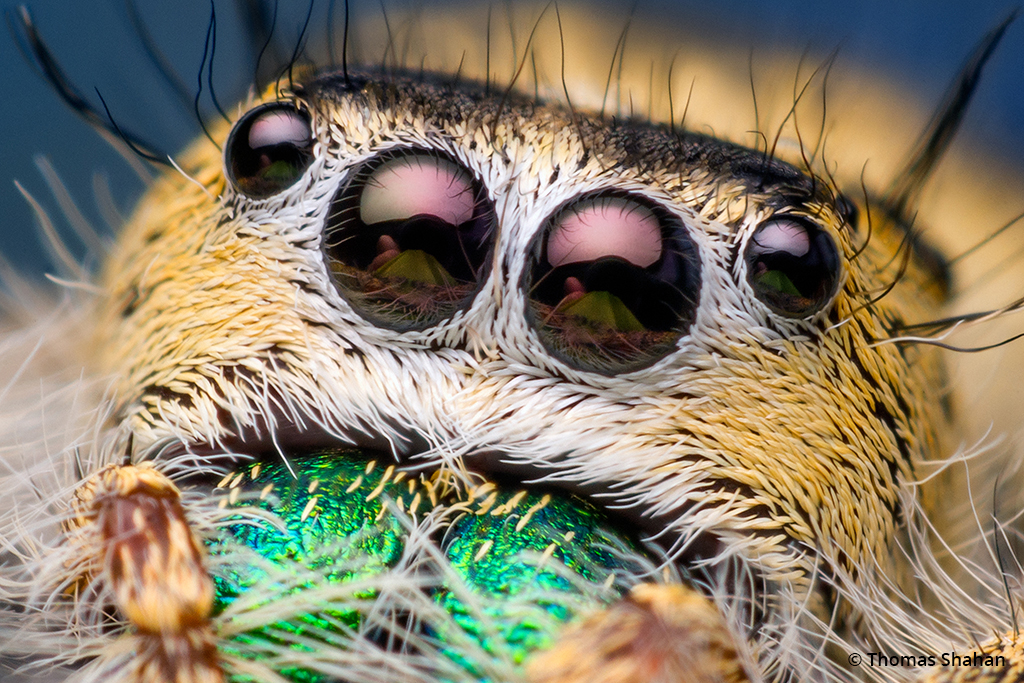
Eyes of a Phidippus workmani jumping spider. Focus stack of three shots. Pentax K-x, reversed Pentax SMC Takumar 28mm F3.5 on extension tubes, diffused off-camera flash. Exposure: 1/100 sec., ƒ/8, ISO 400.
Despite a deep interest in entomology and arachnology, I am not a scientist and do not collect or keep specimens. I simply am fascinated by arthropods and would like to document and share the diversity I see. Ideally, my photographic process should have the least impact or interruption of a subject’s life as possible. Disturbing or harming a subject is never worth the shot. Occasionally, I will briefly capture a subject (in a plastic vial) to shoot on site before releasing it. Increasingly often, I’ve been shooting exclusively “in situ” images of subjects as found and including host plants, associated species and so on, as this offers a better natural history record.
I try to pack light because it can be physically difficult to chase bugs around outside for hours at a time, and having needlessly heavy gear can be a real pain, especially in hot climates. It can get very hot here in Oklahoma during the summer, and I have to prioritize water.
I generally don’t use tripods for macro insect photography in the field; they’re just too bulky and cumbersome when pursuing subjects outside. Getting a stable, sharp shot without a tripod, even in the wind, isn’t much of an issue because the majority of the light in my exposure comes from a diffused flash. Flash freezes whatever subject I’m photographing with an incredibly brief pop of light. Flash also ensures consistent lighting, which is helpful when focus stacking. Most often, I use a twin flash dialed back a bit with both heads at about 1/8th output for a faster recycle time—and briefer pop. To soften the light and wrap it around the subject, I use an ever-changing array of experimental homemade diffusers made of tracing paper, packing foam and packing tape, with which I’m never satisfied. These tend to fall apart in the rain or get dirty over time, so lately, I’ve been building a new one each season.
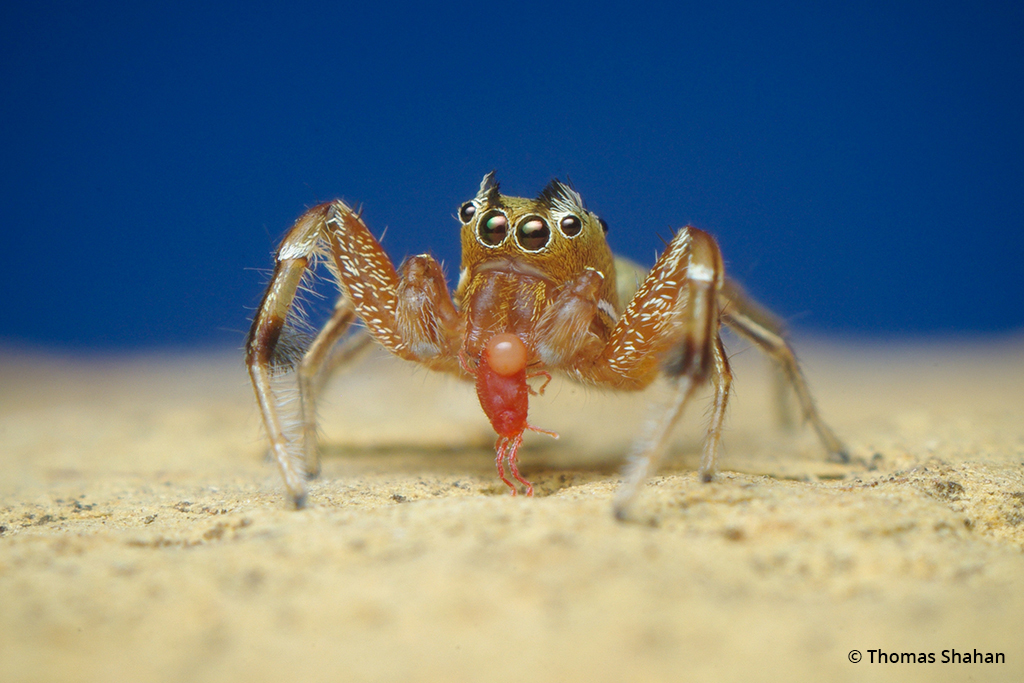
Male jumping spider eating a red mite. Pentax K200D, reversed Pentax SMC 50mm F2 on extension tubes, diffused off-camera flash. Exposure: 1/180 sec., ƒ/11, ISO 200.
Once home, I review my images in Adobe Bridge, culling any unusable shots and highlighting any that might be keepers. The bulk of my editing happens in Adobe Camera Raw, which mostly consists of cropping, white balance adjustments, cloning out sensor dust and sharpening. I’ll do more advanced processing like focus stacking or selective noise reduction in Photoshop. My focus stacks are usually relatively small, maybe two to three shots on average. Deeper stacks with more images are possible in the field but are difficult to pull off handheld with live subjects and no focusing rail. On the rare occasion I need to stack a large batch of photos, I’ll use Zerene Stacker instead of Photoshop.
The Challenge Of Moving Subjects
Bugs will move, and there’s nothing you can do about it. Aside from learning how to work with them and being patient, you can find some techniques that will make shooting them a bit easier and hopefully increase your success rate.
Taking handheld photos at high magnifications can be quite difficult. You lose a lot of light, depth of field becomes razor thin, autofocus hunts around, and little shakes from your hands become amplified, making it easy to take dark and blurry photos. To overcome the light loss, I rely on flash, as natural light is not only unpredictable but is often insufficient at higher magnifications, especially with the lens stopped down. To increase the depth of field, depending on the lens and magnification, I’ll stop down to between ƒ/5.6 and ƒ/16 to find a nice tradeoff between increased depth of field and avoiding diffraction. I find autofocus to be imprecise for macro insect photography and prefer to focus manually. Focusing for me is done by presetting the desired magnification and then simply moving closer or further away from the subject.
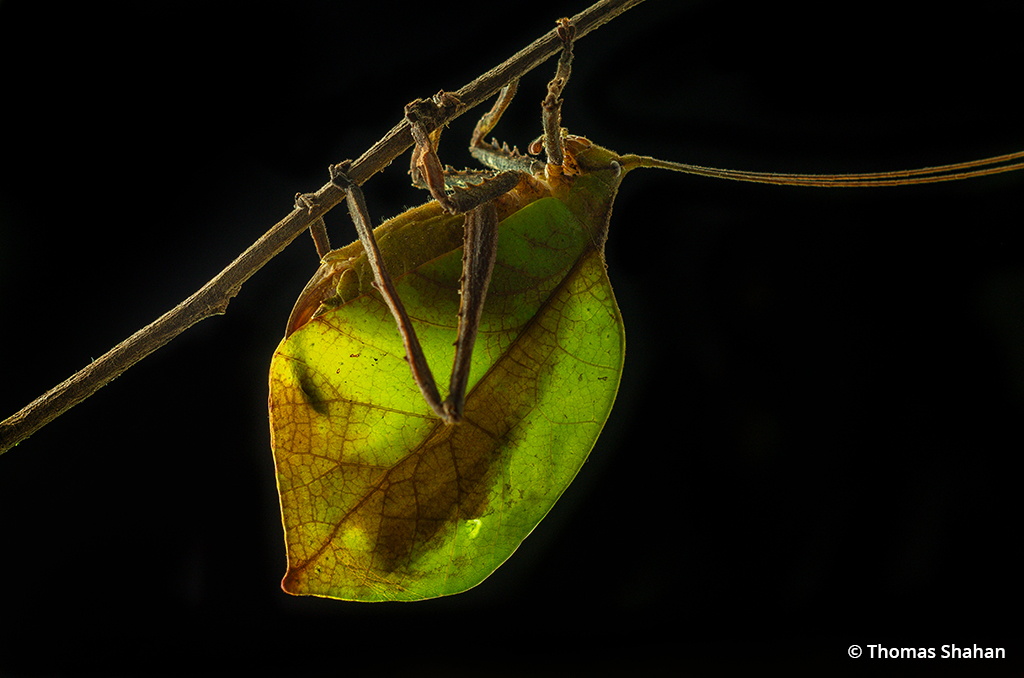
Leaf-mimic katydid, Belize. Pentax K-30, SMC Pentax-M 50mm F1.7, off-camera flash behind the subject. Exposure: 1/125 sec., ƒ/8, ISO 100.
Live subjects are often skittish and not always cooperative. It takes time to learn their behavior and how to approach them. They’ll move about, antennae will wave and palps will wiggle. No problem, though, as a flash freezes this movement, creating a separate faster exposure within the time your shutter is open. Even super active bugs can be imaged sharply without exposure blur using a flash. With a diffused flash right over the subject, I can isolate it in a soft patch of light, keep my shutter speed brief and my ISO low. Above all, patience and persistence are key.
Macro Gear Can Be Light & Affordable
When I first got started in macro, I used primarily extension tubes and reversed prime lenses I would pick up at garage sales. This lasted me for years and was an inexpensive way to learn macro photography. Once macro lenses that could go beyond 1:1 magnification became widely available for my Pentax mount, I mostly switched over to offerings from Venus Optics—notably the Laowa 60mm f/2.8 2X Ultra-Macro, which I still use on a regular basis.
I prefer macro lenses with focal lengths less than 100mm because their tighter working distance means I can get my flash diffuser closer, out and over subjects for softer lighting. This means I might scare away more subjects, but the tradeoff for better lighting is worth it for me. I also appreciate the simplicity of cheaper lenses: no shake reduction, no autofocus, no electronic coupling. These things are nice but just add weight and cost and are not necessary to take nice macro shots.
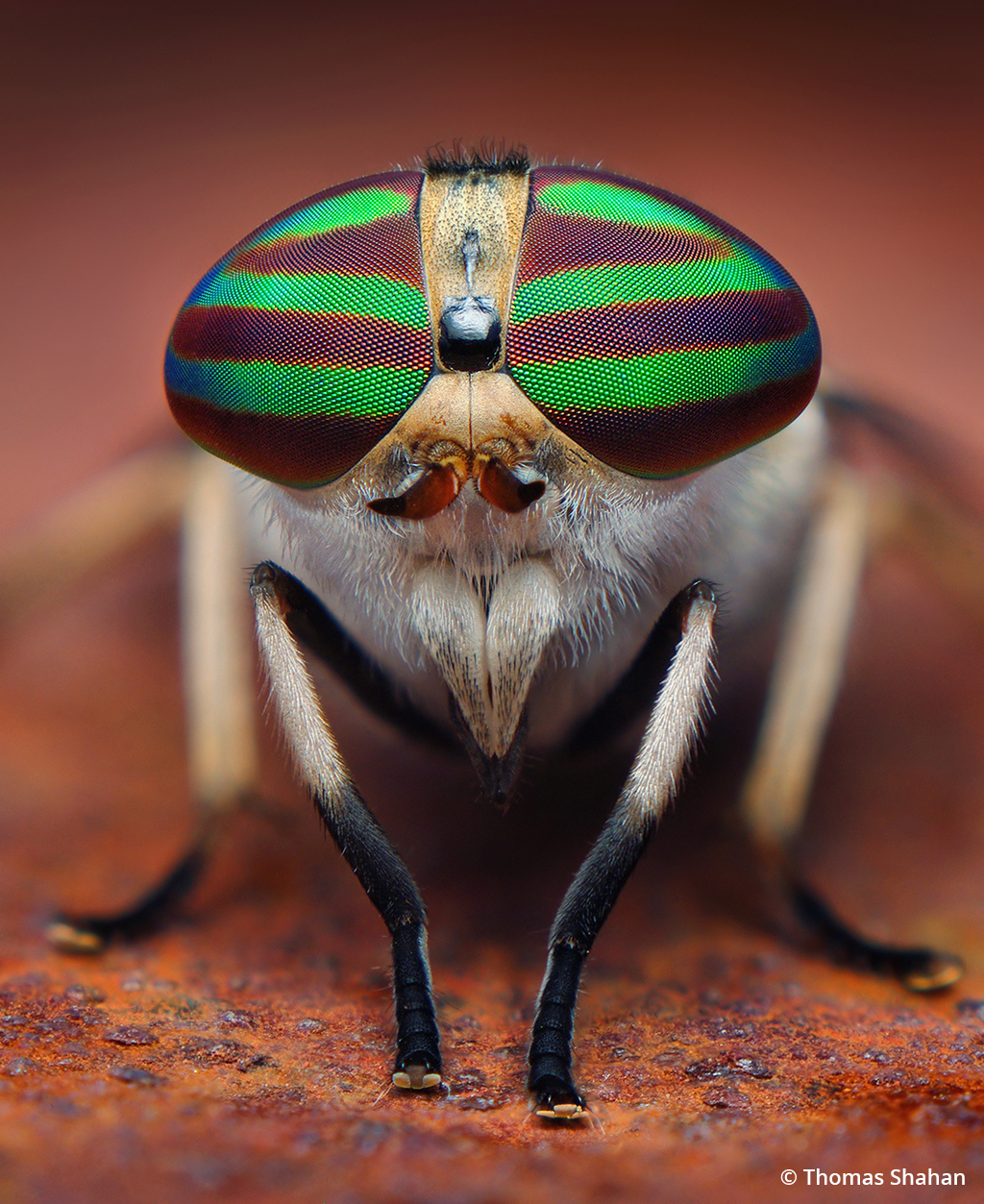
Female Tabanus horse fly. Focus stack of three shots. Pentax K200D, reversed SMC Pentax-M 50mm F2 on extension tubes, off-camera diffused flash. Exposure: 1/125 sec., ƒ/11, ISO 100.
For a long time, I was wholly reliant on the pentaprism viewfinders of bulky, heavy DSLRs, but due to how dark it is through an optical viewfinder while shooting stopped down, I started using my camera’s live view more and more to frame and focus my shots. This shift toward using live view convinced me I should probably finally invest in a mirrorless camera. Being frugal, I bought a used Canon EOS M body on eBay for $150. Originally, I had planned on primarily using it for video work with Magic Lantern (a firmware add-on that would allow you to take uncompressed RAW video on certain Canon cameras), but eventually, I started using it for macro stills due to its small size and weight.
Last summer, I paired my EOS M with the 7Artisans 60mm F2.8 Mark II macro and a little Meike MK-300 flash for a tiny macro setup. Though the camera is older, and I don’t especially like its ergonomics, the body is very lightweight and compact, which makes a huge difference on a long hot day in the field. Lugging around my heavy Pentax rig was literally becoming quite painful, so more than ever, I’m seeing the benefits of lightweight lenses and bodies. Something as simple as being less burdened by a heavy camera in the field can help you stay out longer and get more successful shots.
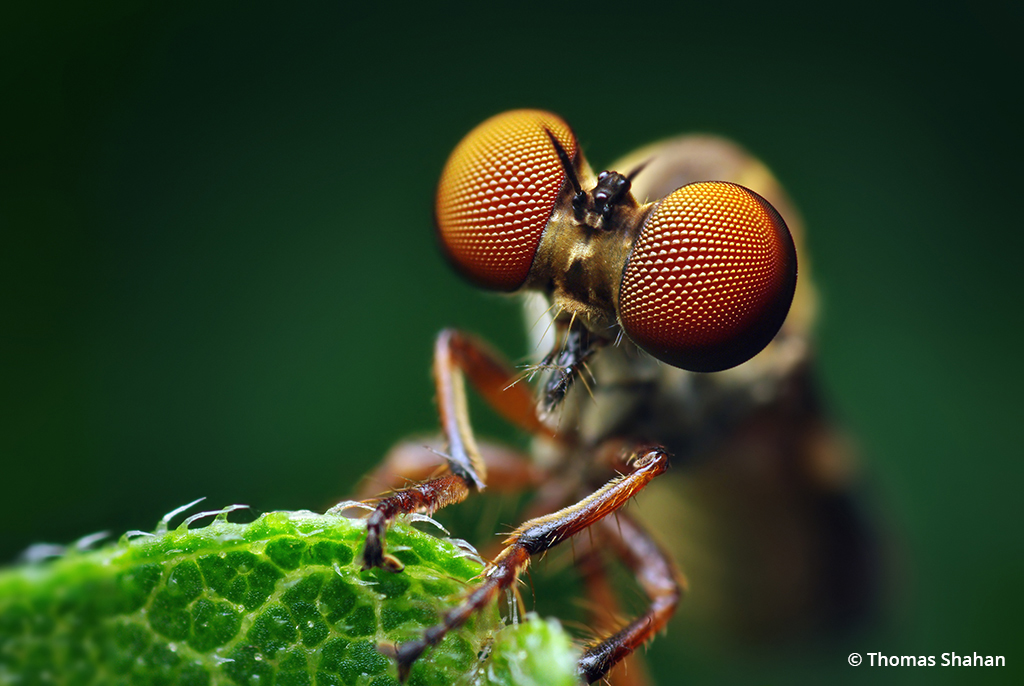
Holcocephala fusca robber fly. Focus stack of three shots. Pentax K200D, reversed Pentax SMC Takumar 28mm F3.5 on extension tubes, diffused off-camera flash. Exposure: 1/125 sec., ƒ/8, ISO 200.
I like to think of a macro system as an inexpensive view into an alien world—an overlooked alien world that’s right here on Earth, all around us, and weirder, wilder and more beautiful than one might imagine.
See more of Thomas Shahan’s work at thomasshahan.com.
The post Creature Closeups appeared first on Outdoor Photographer.

